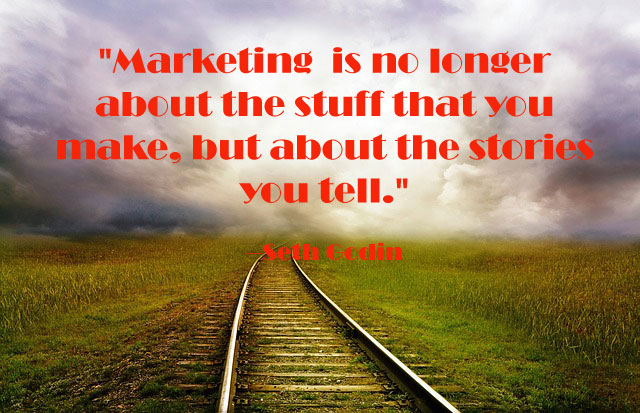People love to read stories and tell stories. This is one thing that hasn’t been changed much in thousands of years. Do you know that storytelling is a powerful yet subtle way that can help you sell more?
Here’s why stoytelling works:
- Stories make people pay attention. Indeed, people pay huge sums of money to read stories (novels) and watch them (movies).
- Stories make people remember. People tend to forget numbers and details. If you want to teach something to someone, tell a story. That’s why the world’s most famous teaching tool, the Bible, is packed full of stories.
- Stories tap into people’s emotion. You can’t sell anything unless you get your prospects to feel something emotionally. So what better way to put them in the right emotional state than by telling them a story!
- Stories make people buy. Telling a good story about your brand gets people’s attention. As a result, they will more likely buy from you.

You may wonder how storytelling can help you make more sales.
For starters, you can use storytelling selling everywhere, including on sales pages, in pre-sell reports, in articles you submit to article directories, on forums and more.
Indeed, one of the best places to tell a story is on your blog. And that’s because it gives you the opportunity to really connect with your readers.
Here’s how to create a storytelling selling blog post…
Hook Your Readers Immediately
Forget about an article that starts by telling the readers what they’re going to learn. Instead, jump right into your story. And engage the reader’s senses whenever possible.
Example:
Perhaps you’d start a self-defense article like this: “Suzy felt a cold chill wash over her. Every time she crossed the dark street, the stranger who was following her did too. When she quickened her steps, so did the stranger. And then she let out a muffled scream as his fingers wrapped around her mouth and throat…”
Transition From Story to Facts and Benefits
Now you need to start tying your story into whatever it is you’re selling.
Basically, you’ve set up a problem – and now you tell people how to solve it.
You may share some useful tips, but the reader will need to purchase a product to get the full instruction. And you convince the reader to purchase that product by providing benefits.
In continuing with the above example, you might write something like this:
Example:
“Suzy was scared out of her mind, but then her self-defense training came back to her. In three smooth moves she had the attacker on the ground, which gave her plenty of time to flee and then call 911.
So what moves did she lay down on her attacker? Take a look…
At this point you’d go on to describe the three moves. But since these moves cannot be taught in an article, you now have the opportunity to promote a self-defense video training course. And this is where you offer the benefits of the product, such as:
Examples:
- Now you can feel confident in any situation – even in dark alleys!
- Complete video instruction is the next best thing to having a personal self-defense instructor teach you these moves!
End With a Call to Action
Your final step is to tie the story to your reader, and then call the reader to action.
In continuing with our self-defense example:
Example:
“You be like millions of women who are afraid to leave their house after dark. Or you can be like Suzy, who knew the right way to fight back. Protect yourself – and your family – by clicking here to learn more!”
You see that storytelling is a powerful way to bring you more sales. Start to use storytelling in your blog and make more money. Do you have a story to share? I would love to hear from you.





